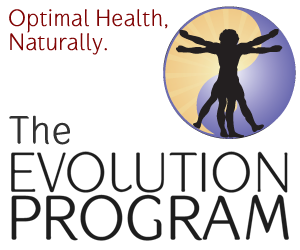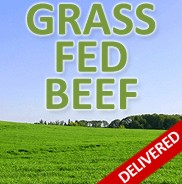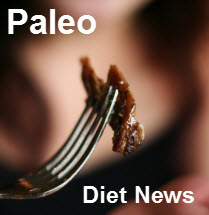Paleo Diet vs. The Zone - How do they compare?
Earlier this year US News and World report did a complete ranking of current popular diets. Both the Paleo diet and the Zone diet ranked low in many areas. The Paleo diet ranked dead last, however it originally received the most votes at the time of the article’s publishing (3723)* from the Paleo community for having actually worked the best for weight loss.
The reason for this appears to be that because it is so new there was not enough research to rank it in all the categories. The Paleo diet out ranked the Zone diet which only received (142) votes for and based on the votes for most successful weight loss, the next most popular diet, Weight watchers received (2211) votes.
I was curious about this report and so I decided to do a quick comparison between the Paleo diet and the Zone diet. In the search for a diet that will help you lose weight and stay healthy you will soon be overwhelmed with options. So many factors need to be considered when you research a new diet plan. Just because the Zone diet worked for your best friend does not mean you will enjoy it or that it will work for you.
Since finding the right diet for you can be a challenge, start with an understanding of what you are expecting from a diet. Do you need to control your cholesterol and triglycerides? Are you trying to lose a lot of weight quickly? Do you have allergies or digestive problems and need to adjust your intake of dairy or gluten?
Your doctor is the first stop for getting a clear picture of your current health and fitness level. However, even the medical community seems to be confused about which diets work best. Remember everybody is different and there is rarely success with a one-size-fits-all approach.
I have tried to simplify some of my research results by comparing these two diets that are increasingly popular, the Paleo diet, and the Zone diet. Based on weight loss success, nutritional completeness, cost involved and whether the diet is easy to follow and maintain, I’ve come up with some interesting things to consider.
 The basic formula for the Zone diet includes an exact combination of proteins, carbohydrates and fats at every meal in the 40/30/30 proportion. The purpose is to keep blood sugar levels stable at all times and to keep the body functioning at peak performance throughout the day.
The basic formula for the Zone diet includes an exact combination of proteins, carbohydrates and fats at every meal in the 40/30/30 proportion. The purpose is to keep blood sugar levels stable at all times and to keep the body functioning at peak performance throughout the day.
When blood sugar levels are consistent there are fewer cravings and you don’t feel that drop in energy that comes after a spike in blood sugar, for this reason both the Zone diet and the Paleo diet are helpful for controlling diabetes. There is little evidence to support that idea that either one helps prevent heart disease.
The Zone diet limits calories and animal fats as well as carbohydrates, as well as dairy products and cheese; however no food group is completely eliminated. Initially you may see significant weight loss, however many people find the program complicated and are not able to follow it all the time.
The Zone program does suggest that you purchase their specially designed foods like bagels, bread, rolls and pasta to control carbohydrates and on the Zone diet, eating every 5 hours is recommended, which can be difficult to maintain.
In comparison the Paleo diet focuses on eating only unprocessed, whole food that was available before the agriculture era, the theory being that humans were never supposed to eat processed foods or dairy products. This means the Paleo diet restricts dairy and grain food categories. This can be difficult for some people to stick to.
For weight loss, the Paleo diet works very well according to the enthusiasts who follow it, and because there are only “good” carbs it can also works well for controlling diabetes although the research is not there yet. The cost of food for this diet is reasonable since there are no expensive specialty foods to buy, however meat is the most expensive of the food groups so choosing inexpensive cuts may be an option.
Overall the comparison between the Paleo diet and the Zone diet indicates that the Paleo diet is better for losing weight and healthy in terms of controlling diabetes. The cost is of food for each of the diets is also in favor of the Paleo diet because you do not have to buy specialty breads, pasta and snacks. However it depends on your personal preference whether you could stick to the Paleo diet without dairy or processed food on the other hand the Zone diet has you eating every 5 hours which can be a challenge too.
-
*Editor’s Note: There appears to be some bad feelings in the vegan/vegetarian community for the Paleo community. After the article had been out for about 3 weeks, a deliberate effort was made to skew the voting numbers on the site. Originally there were 3723 yeses and 108 noes for the Paleo diet. The numbers for the vegan and vegetarian diets were low (I don’t recall the original numbers). But the Paleo diet was the only one which had more positive numbers than any other diet (second was Weight Watchers). Then the word got out about the ranking and the numbers for the vegan and vegetarian diets shot up (fair enough), but the noes for the Paleo diet also shot up at the exact same time to 23732. This is suspicious, since the increase in vegan/vegetarian diets happened exactly at the same time as the noes on the Paleo diet increased. It is entirely possible that all of these people had tried the Paleo diet, failed and then went vegan, but since I know of many people who were vegan/vegetarian who turned to the Paleo diet for health reasons, I believe these results to be suspicious. Keep in mind that the popularity of the Paleo diet is rather new. Had US News and World Report done the diet rankings last year, the Paleo diet would not have been on the list. It is known to Paleo diet practitioners that vegetarians and especially vegans, hold the diet in low regard because of the emphasis on eating meat. Many people are vegans because they have moral objections to eating meat. This makes anyone who eats meat a pariah or worse, a murderer. Paleo diet followers really enjoy eating meat, but we are also very concerned about the conditions in which the animals are raised and how they are slaughtered. So much so that we willingly go without certain types of meat because we cannot get grass fed/pastured, humane slaughtered products.
















